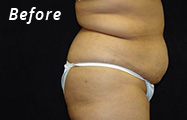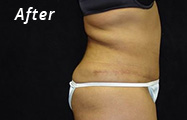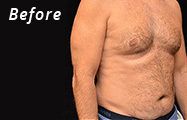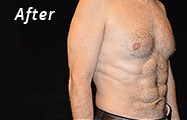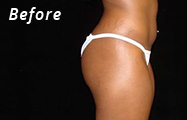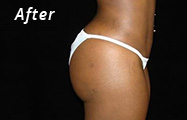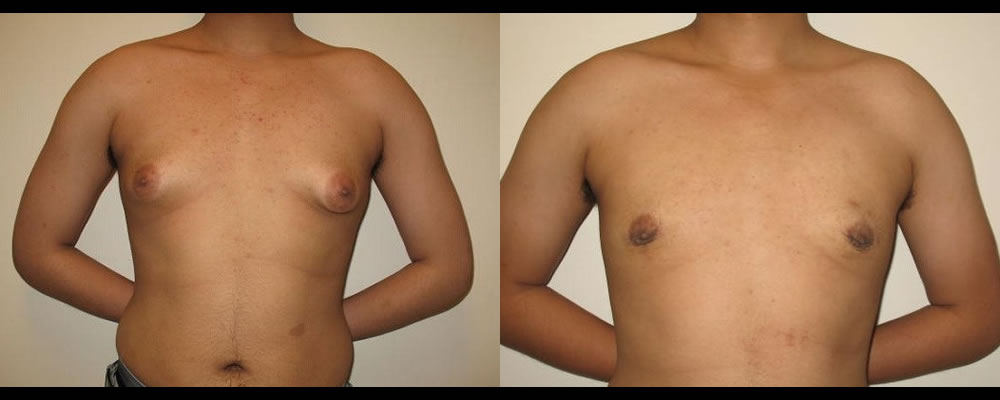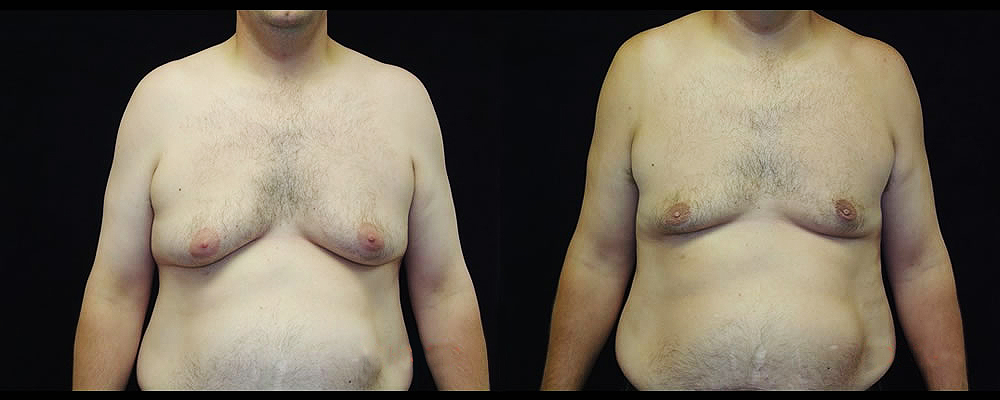Gynecomastia (Male Breast Reduction)
Conveniently located to serve the areas of Baltimore, Columbia, Ellicott City and Maryland

Gynecomastia, also known as male breast enlargement, is a condition that can cause distress and self-consciousness in men. It is characterized by the development of excess breast tissue, resulting in a feminized appearance of the chest. Comprehensive gynecomastia treatment options help men regain their confidence and achieve a more masculine chest contour.
Dr. Daniel Markmann of Metamorphosis Plastic Surgery offers world-class gynecomastia surgery in Maryland. He understands how much gynecomastia can affect the lives of the men who have it, and he believes in the transformative power of the cosmetic treatments that he provides. For more information about gynecomastia surgery, call (410) 465-3600 or visit our contact page to book your personal consultation.
Contents
Before and After Photos
About Gynecomastia
Gynecomastia is a condition that accounts for about 65% of all male breast disorders. It causes excess fat and tissue to develop in the breast. It is caused by hormonal imbalance, the use of steroids, or taking medications containing estrogen. Certain medical conditions like Klinefelter syndrome, adrenal tumors, and thyroid disease can also cause gynecomastia. (1) It can develop in most stages of a man’s life after pre-adolescence. In adolescent men, it can have a seriously negative impact on self-esteem and self-confidence, though it has the potential to affect the life of any man who has it. (2)
Dr. Markmann works with his patients in Baltimore to reduce the size of their breasts, and improve the look of their chest with gynecomastia surgery. The procedure involves Dr Markmann making an incision along the border of the lower half of the areola. This gives access to remove the breast tissue. The liposuction incision is then placed in an inconspicuous location and liposuction is used to remove excess fat and contour the pectoralis muscle, giving a more masculine and muscular look. We typically utilize liposuction to remove the fat cells from the breast. Mild cases of gynecomastia can be corrected with liposuction alone.
Benefits of Gynecomastia
Gynecomastia hides the chest muscles that lie underneath the layers of overdeveloped breast tissue. For those who have severe gynecomastia, it is possible that the overgrowth of breast tissue has developed internal scarring. With gynecomastia surgery, all excess fat and breast tissue will be removed and the pectoralis muscles will be revealed. This will serve to masculinize the patient’s chest, bringing them closer to the traditional ideal of masculine appearance. With proper diet and exercise after the surgery, men will be able to tone and strengthen their chest muscles to regain the chest’s natural form.
Eliminating the symptoms of gynecomastia can have significant real-life benefits. It can increase self-confidence and boost self-esteem. Having a normal chest can improve patients’ overall well-being considerably.
Who is a Candidate for Gynecomastia?
An ideal candidate for gynecomastia surgery will want to restore their chest to its naturally masculine state, and be proud of their body once more. If you can relate, gynecomastia surgery might be right for you.
Before we can recommend gynecomastia surgery, we will perform a variety of tests and possibly prescribe medications to see if any improvement occurs. Many times, gynecomastia can be addressed with methods that are more natural and less invasive than cosmetic surgery. If the breast enlargement persists, surgery is an option. If you are overweight, we encourage you to try to lose weight before you receive gynecomastia surgery. We want to rule out the possibility that you have pseudogynecomastia, which is the enlargement of the male breast that is caused by excess fat buildup, without any hormonal or otherwise medical reasons.
To be considered eligible for gynecomastia surgery, you should be in good health. You also need to have realistic expectations about what treating your gynecomastia can do for your life. Flattening your chest can improve your appearance, but a healthy diet and lifestyle will always be the key to improving and maintaining your appearance.
Personal Consultation
At your personal consultation, you can ask us any questions you might have about gynecomastia or the surgery that we offer to treat it. We value patient awareness and transparency, and we want to make sure that the decision to undergo surgery is an informed one. We will ask you some questions about your medical history and run some tests to determine if surgery is a safe option for you at this time. We will examine your breasts and gather the information we need to plan your procedure. When the details have been discussed, we can make an appointment for your procedure.
To schedule your personal consultation with Dr. Markmann, call (410) 465-3600 or fill out this form.
Preparation
Preparing for your gynecomastia surgery can help ensure that the procedure goes to plan and that you recover successfully. We will provide you with instructions that will be based on what we know about you and your medical history. These may include stopping or starting certain medications. Before any cosmetic surgery, you should avoid taking medications like ibuprofen that will thin your blood. Blood-thinning medications can cause excessive bleeding during surgery.
If you smoke tobacco or use nicotine products, you should take a break first least one month prior to and one month after surgery. The side effects of smoking as well as any nicotine use can cause complications during surgery and affect your ability to heal. Be sure to hydrate throughout the preparation and recovery phases of your treatment. The procedure is typically performed under General Anesthesia and therefore, you must arrange for a ride home on the day of your surgery by a family member or friend. No Ubers, Taxi’s etc. .
Gynecomastia Procedure
We typically perform gynecomastia surgery as outpatient procedures that take about one hour to complete. On the day of your procedure, we will administer general anesthesia to you in order to minimize your discomfort. To begin, Dr. Markmann will make small incisions around the areolas. Through these incisions, He inserts a cannula (thin suction tube) to extract fat and breast tissue. If your gynecomastia symptoms are severe, Dr. Markmann will make a longer incision to remove excess skin. This step is necessary to tighten up the smaller breasts if there is too much skin to reform around the lower breast volume. Dr Markmann can also reshape and reposition the areolas in order to optimize the aesthetic appearance of your breast. When your breasts are reduced, Dr. Markmann will close the incisions and we will wrap your treatment area. We will transfer you to a recovery room where we will monitor you as you recover from the anesthesia. When you are ready, you can go home.
Recovery
You should expect bruising and swelling around the chest area for the first couple of weeks. We can prescribe medication to prevent discomfort while you heal. You should wear compression garments for about 2 weeks to help with reshaping and healing. Gynecomastia requires some downtime, so you will need to take some time off from work. Most patients are able to return to their normal routine after a few days. However, you should avoid strenuous physical activity for a few weeks. Be careful not to put pressure on or strain your chest while it is healing.
Results
You will notice a reduction in the size of your breasts immediately after your treatment. However, the full extent of your aesthetic improvement will only reveal itself when the swelling has gone down completely after several months. You will have some visible scarring, though it will be hidden in discrete locations and will fade over time. Regardless, most patients consider visible scarring worth it for the life-changing enhancement of their appearance. Although results do vary, most patients are satisfied with their results. You will have restored confidence in your body and newfound self-esteem. It is possible to receive additional procedures to fix or maintain the results of your gynecomastia surgery.
How Much Does Gynecomastia Surgery Cost in Baltimore?
The cost of gynecomastia treatment at Metamorphosis Plastic Surgery will vary depending on various factors related to your individual treatment plan. Dr. Markmann will be pleased to share this information with you after your personal consultation at our Ellicott City location. To find out more about this surgery, call (410) 465-3600 or contact us online.
FAQ
How do I know if I have gynecomastia?
This condition must not be confused with false gynecomastia, also known as pseudogynecomastia, in which the enlargement is caused by fat deposits instead of breast tissue development. A provider can determine this by physical examinations or lab tests during the initial consultation. If it is a case of excessive fat tissues on the chest, the approach in treatment is the same when removing excess fat tissues in any part of the body. Proper diet and exercises are initially recommended before considering any surgical treatment. However, if the issue persists, liposuction – sometimes even combined with a lift – may be performed to reshape the chest.
Is liposuction necessary for gynecomastia surgery?
Liposuction is the primary approach in extracting fat or any soft tissues. Because it uses a small cannula to vacuum the fat out, it is a less invasive approach compared to excising the tissue, which requires longer incisions.
Does liposuction leave visible scars?
If the breast reduction technique utilizes liposuction, the incisions will be minimal and will be placed around, in a crease under the breast or in the underarm folds. Dr Markmann will make every effort when it comes to making the incisions and suturing to minimize the effects of scarring.
References
- Swerdloff RS, Chiu Ming Ng. Gynecomastia: Etiology, Diagnosis, and Treatment. Nih.gov. Published July 7, 2019. https://www.ncbi.nlm.nih.gov/books/NBK279105/
- Holzmer SW, Lewis PG, Landau MJ, Hill ME. Surgical Management of Gynecomastia. Plastic and Reconstructive Surgery – Global Open. 2020;8(10):e3161. doi:https://doi.org/10.1097/gox.0000000000003161




.png)
